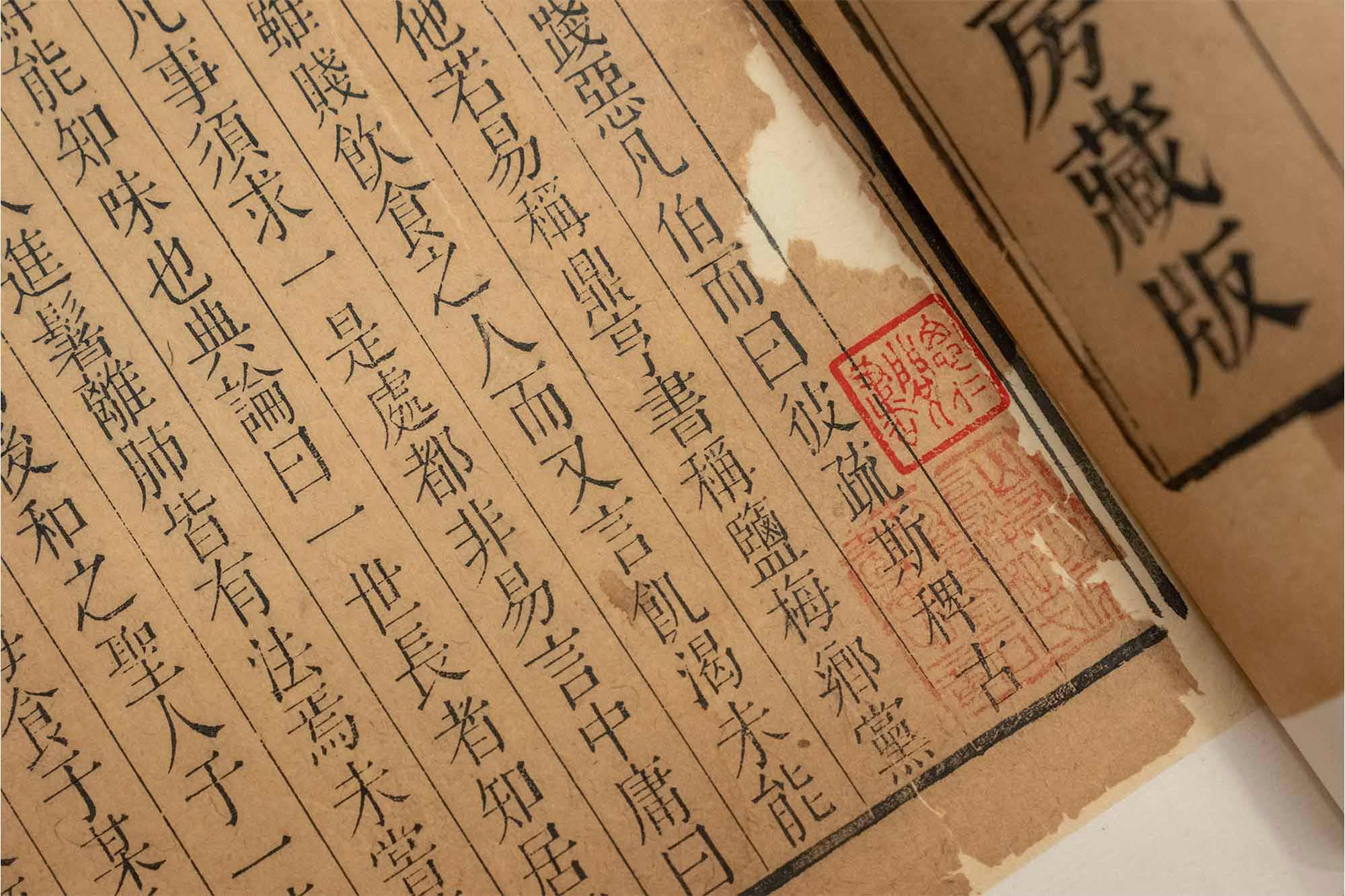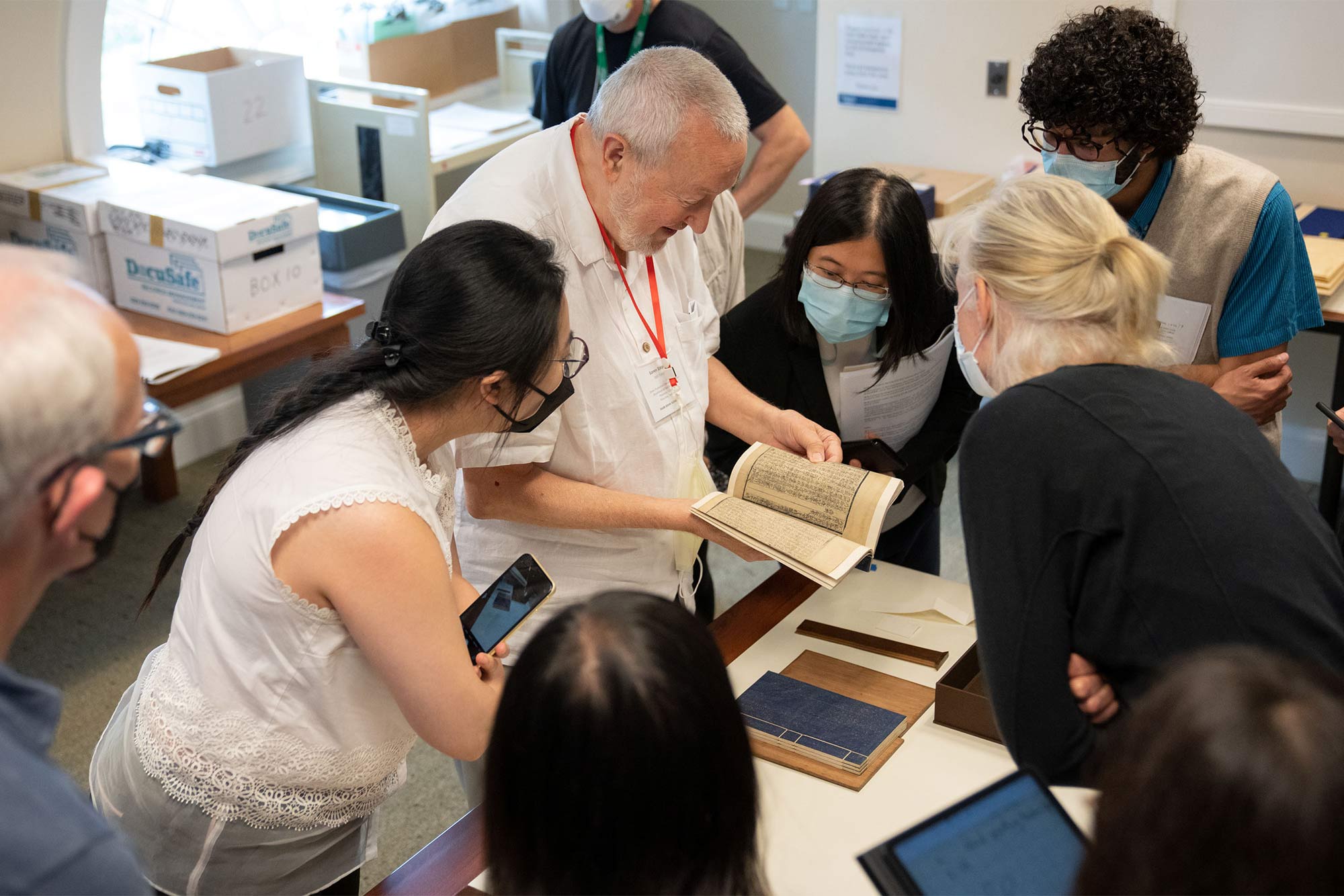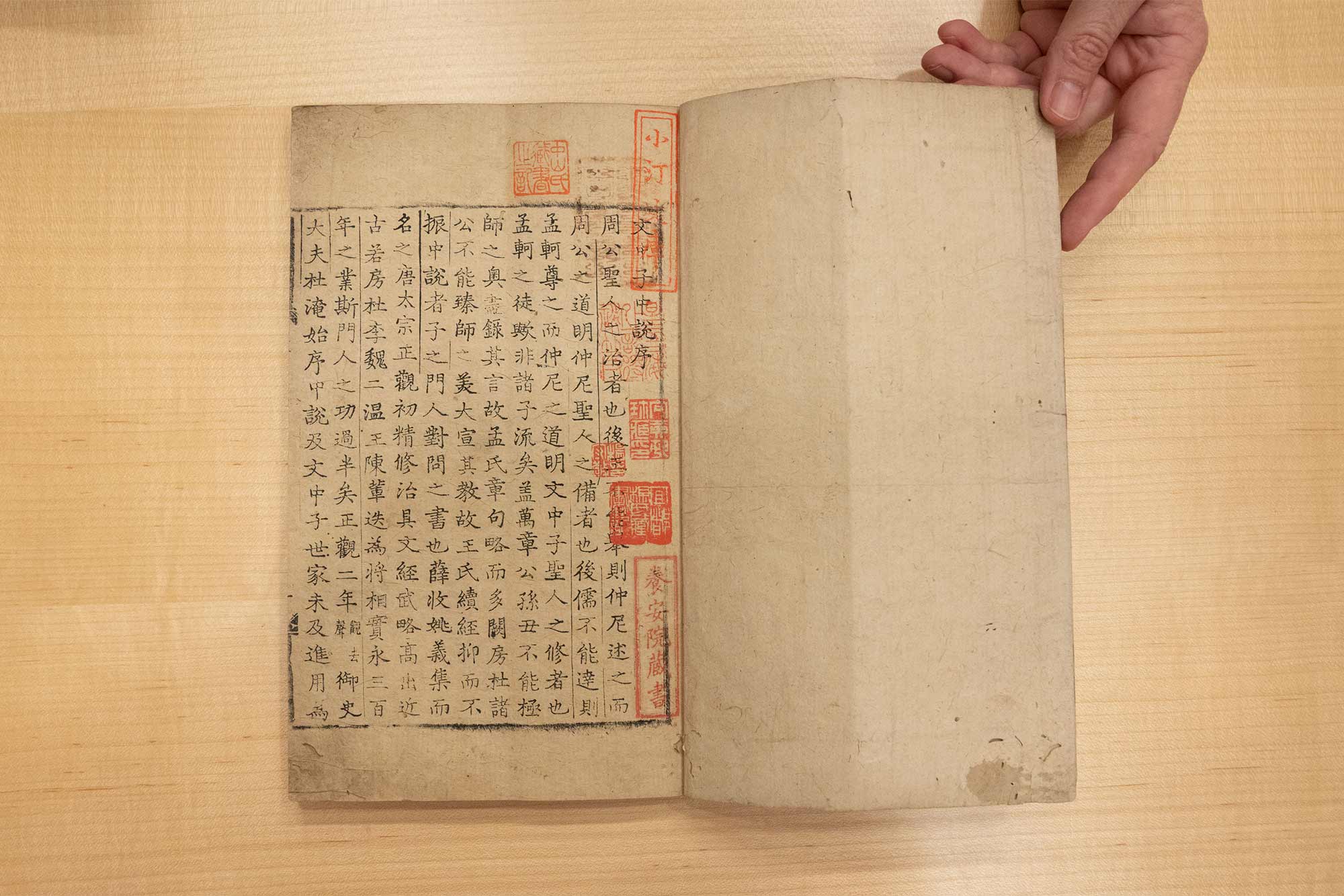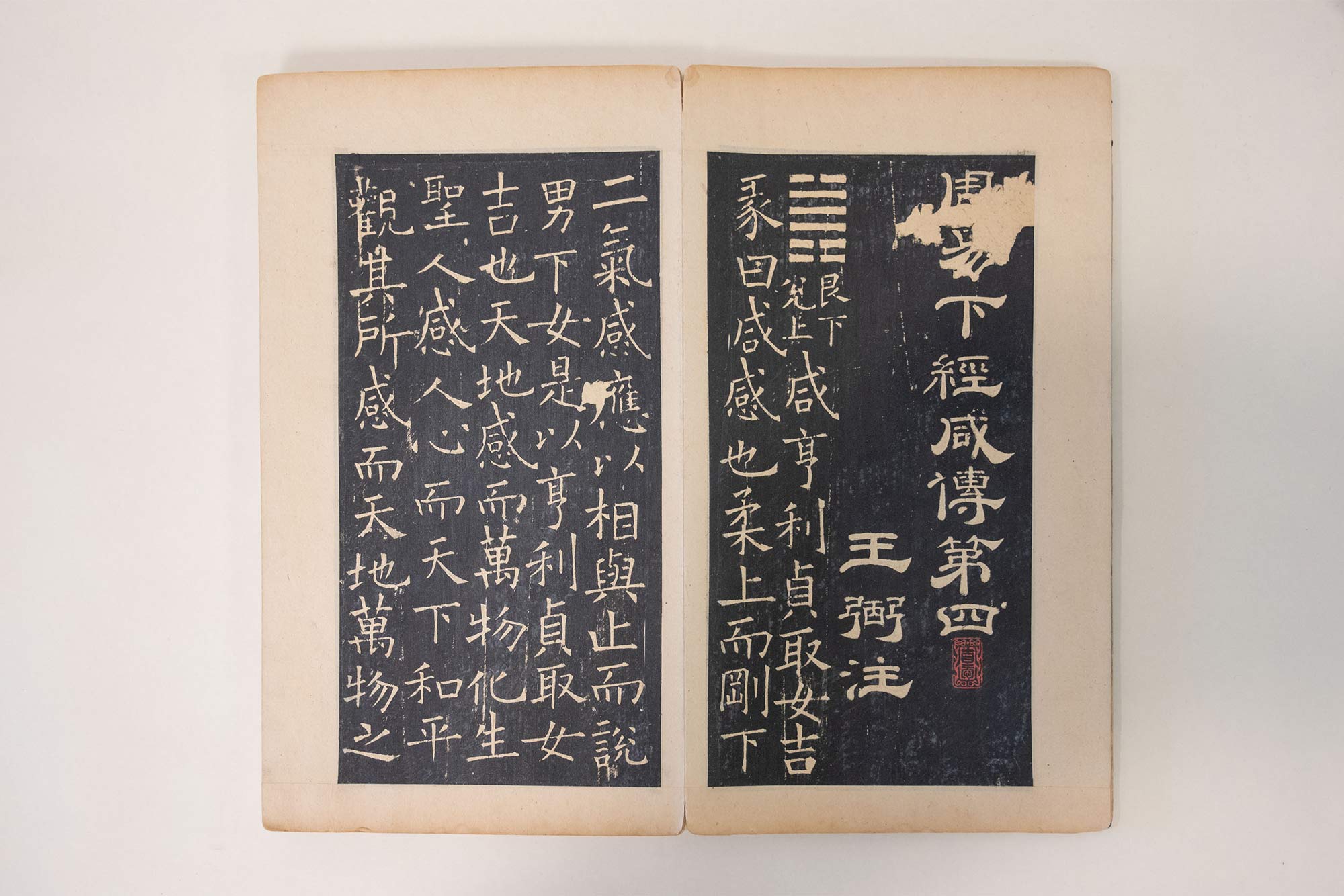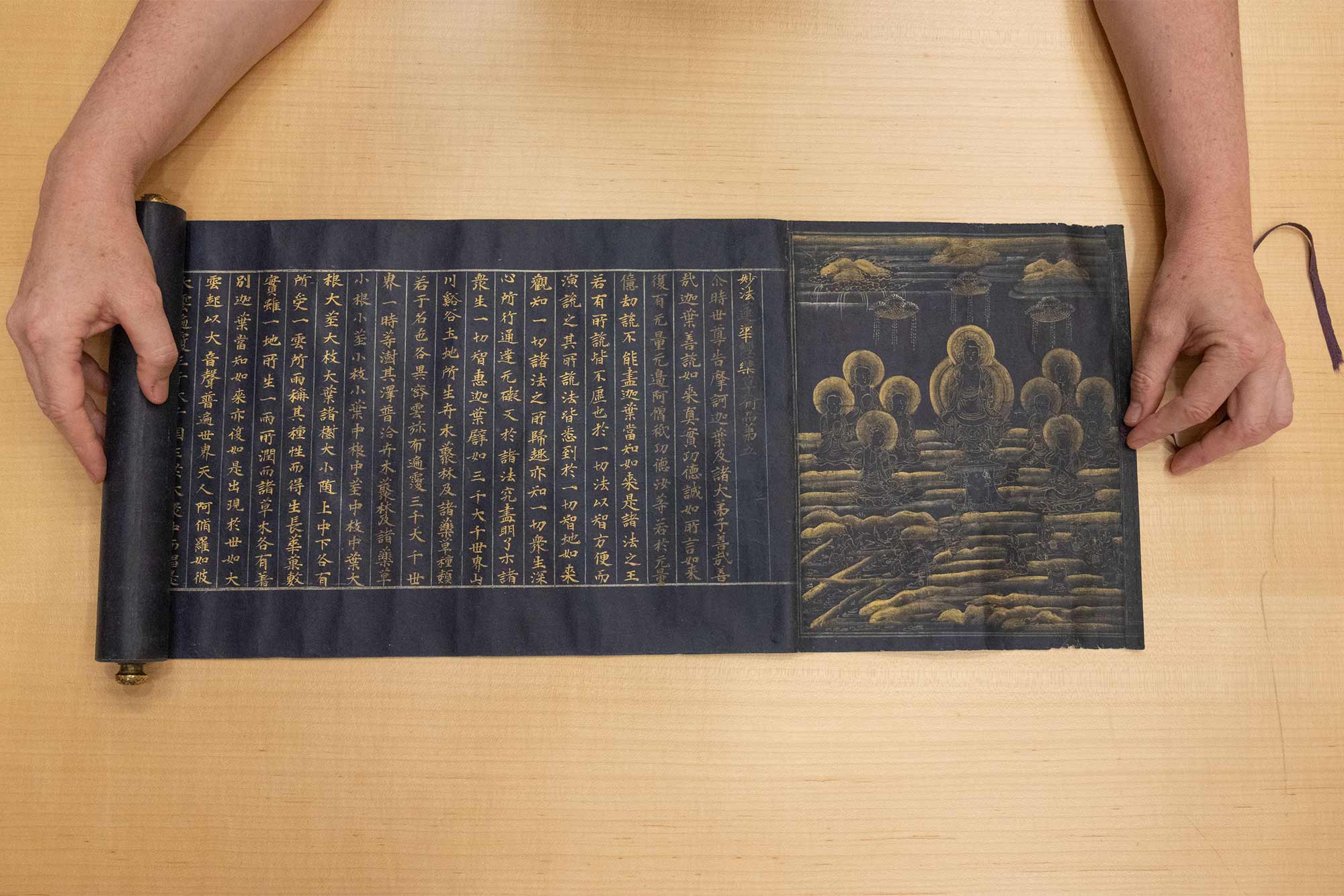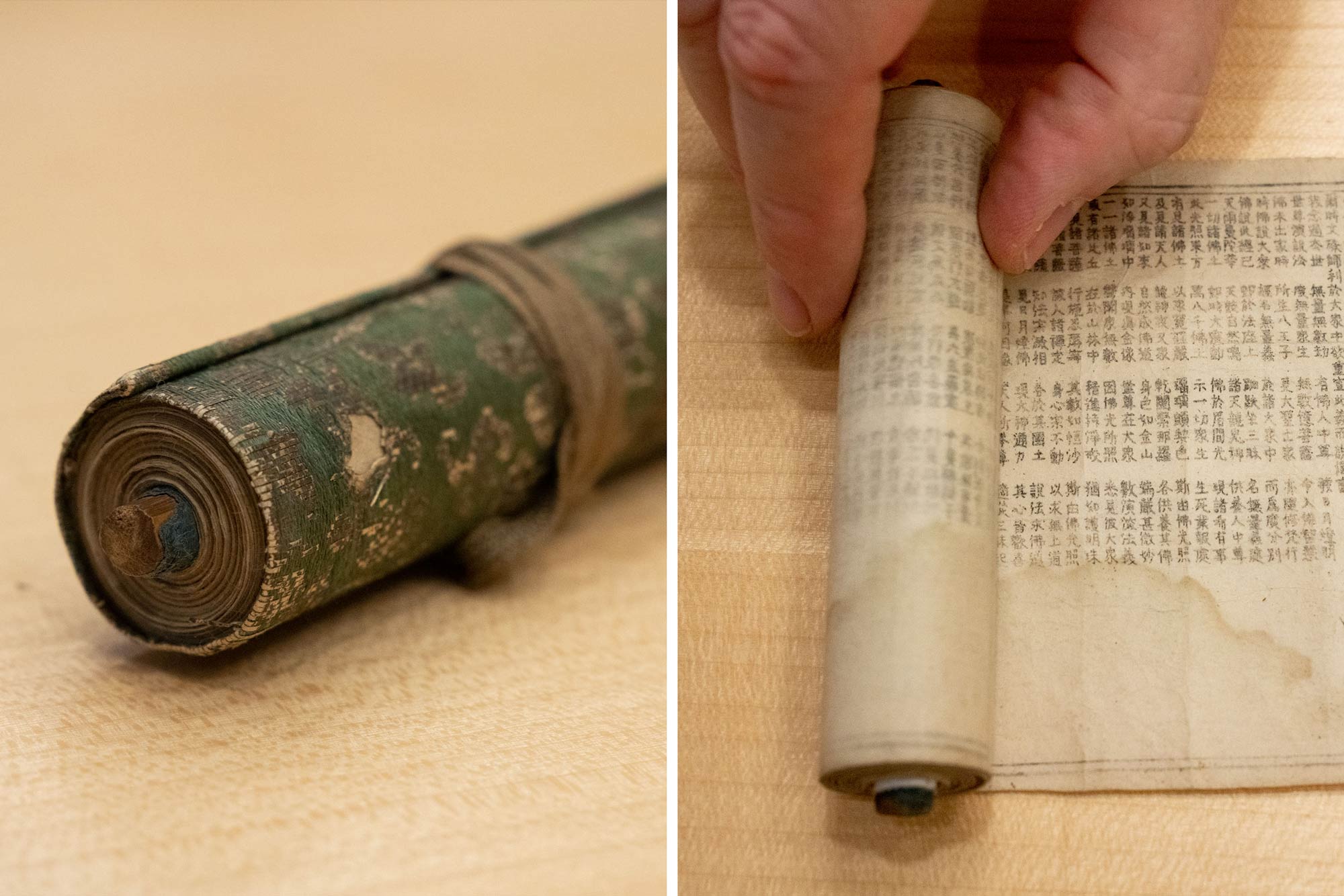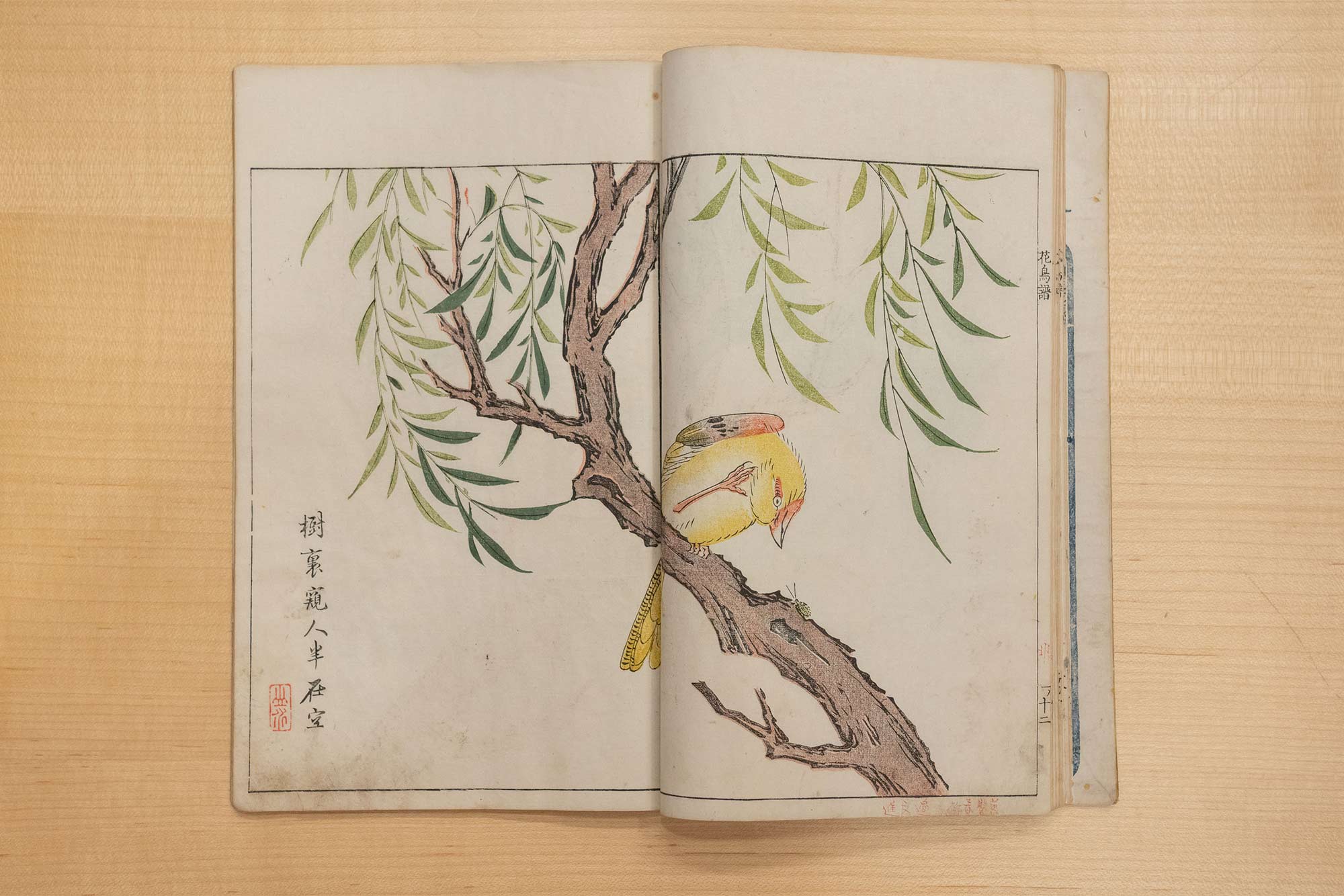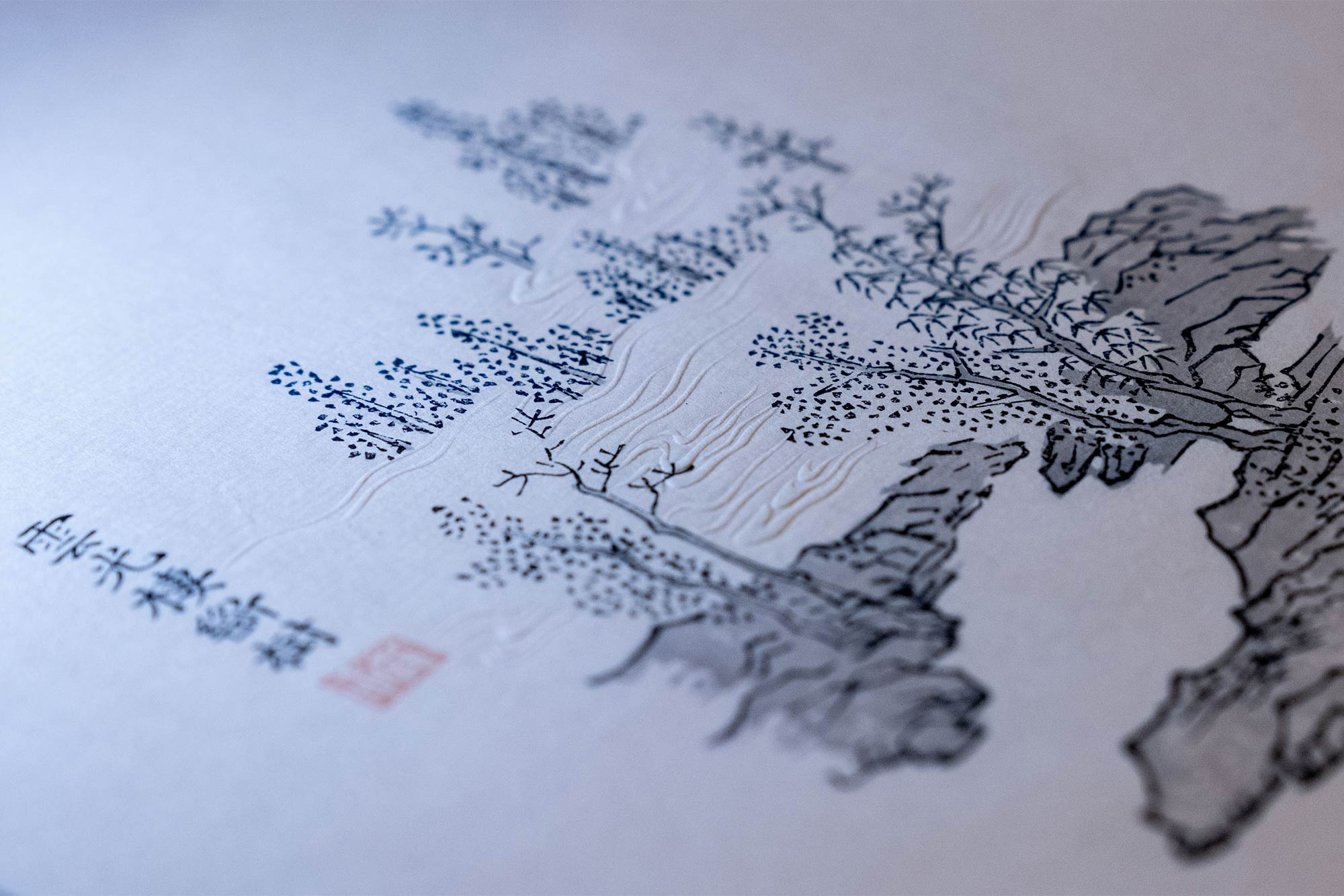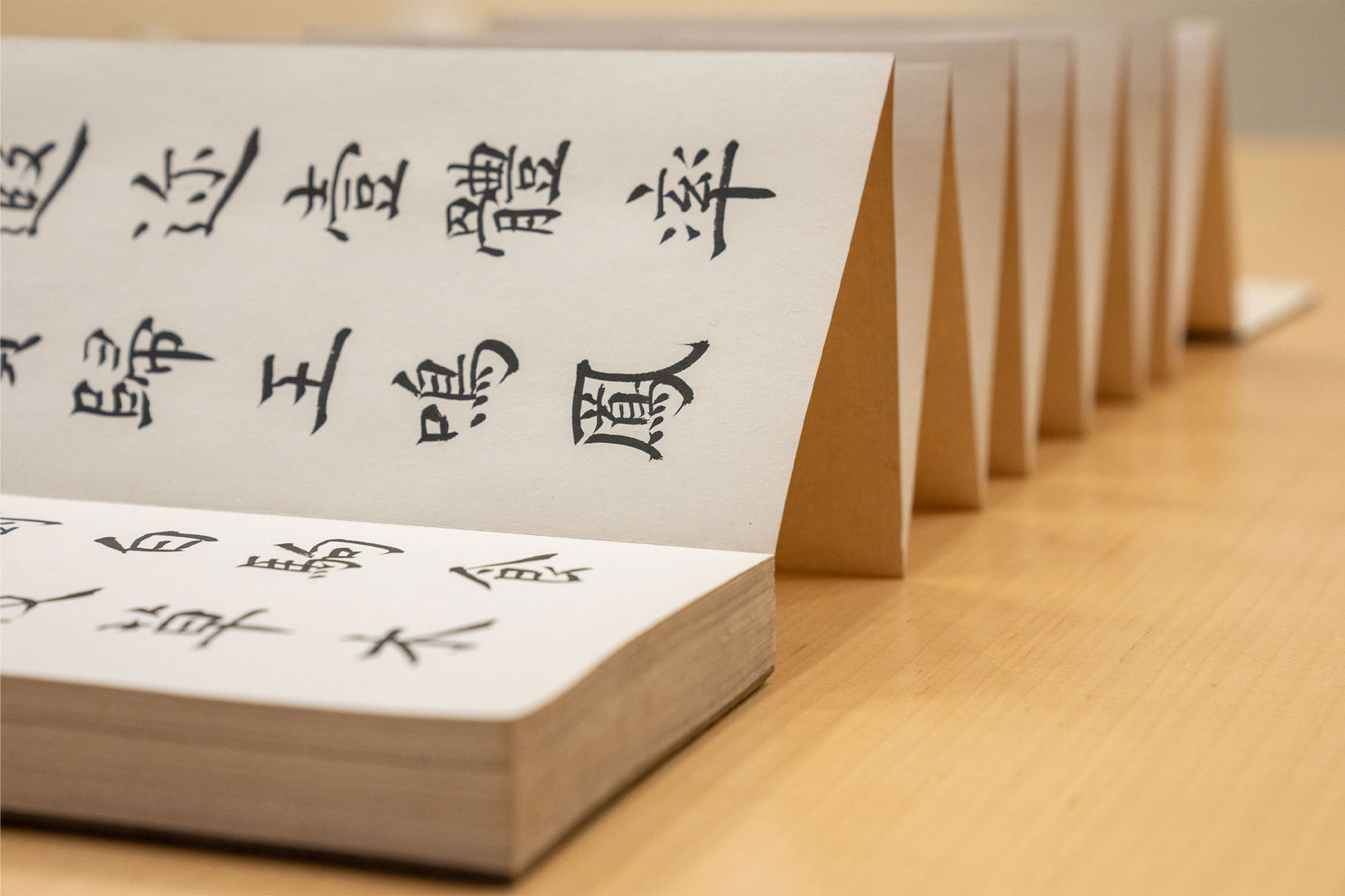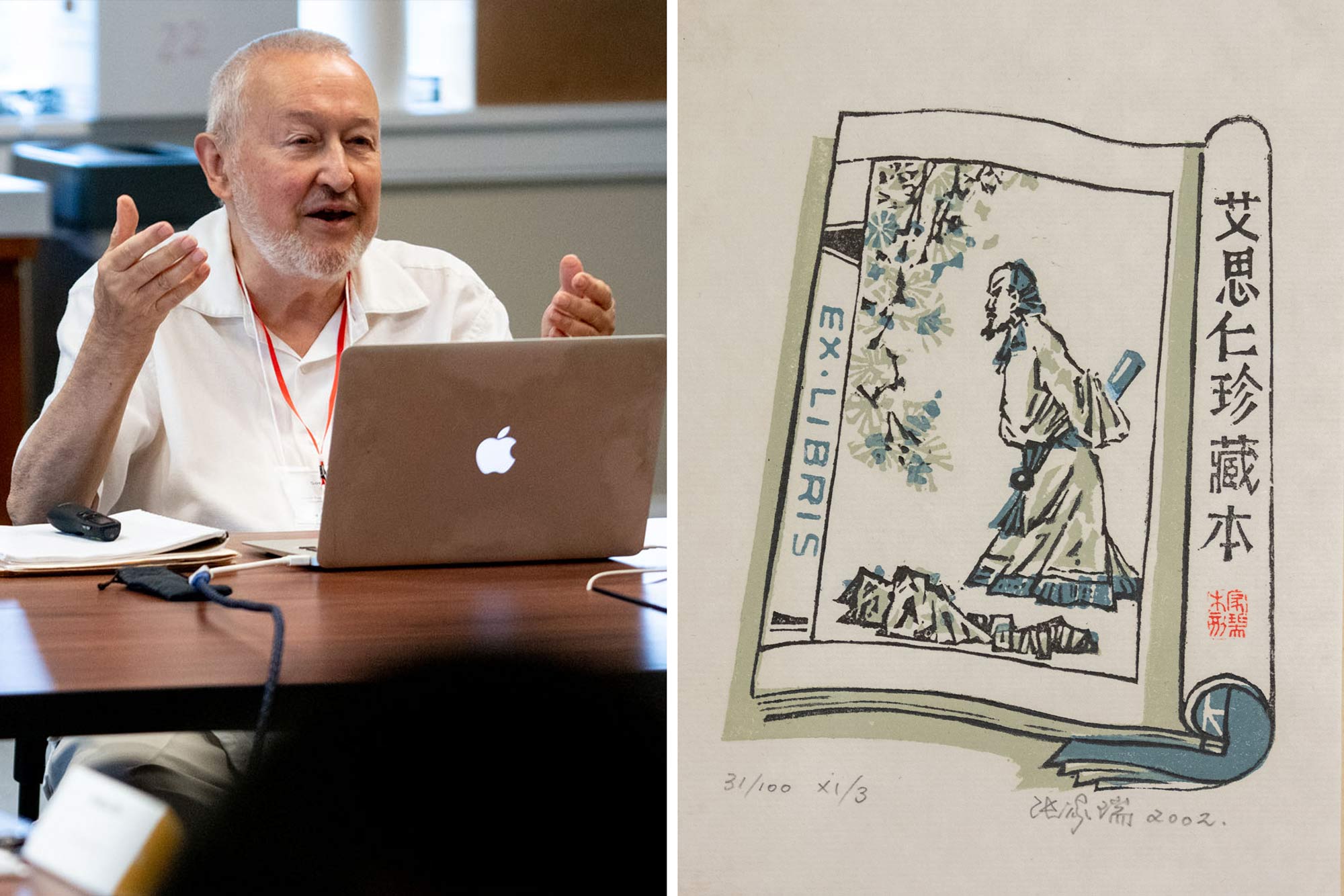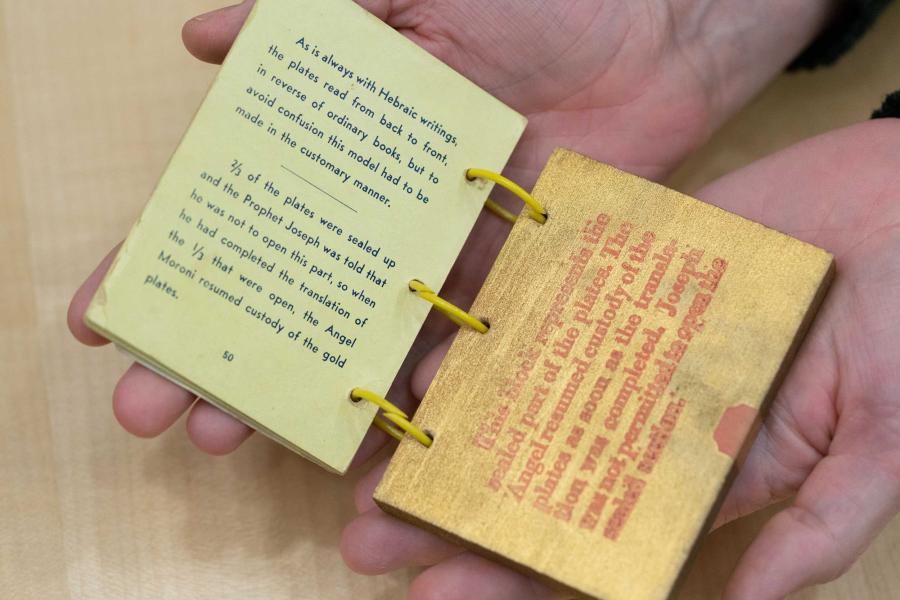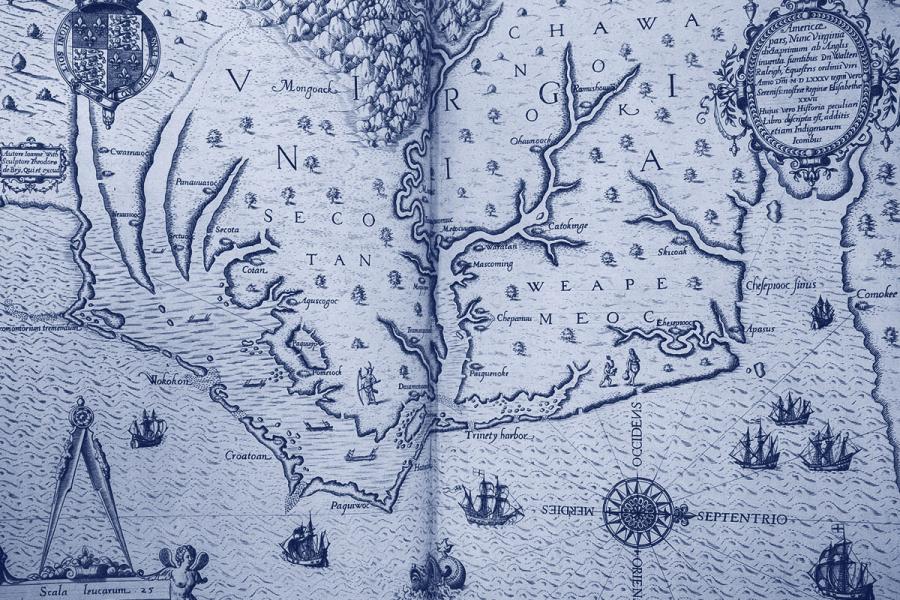Instructor Soren Edgren gingerly lifted a rare Chinese book, bound in indigo-dyed silk covers, from its hardwood box. Students hoisted their mobile phones to take photos, and despite this book being centuries old, were encouraged to pick it up and examine it.
It’s an example of the hands-on approach typical of Rare Book School at the University of Virginia.
Edgren, an expert in rare Chinese books, has spent decades gathering a collection believed to be one of the most significant private collections in North America.
The collection now has a new home in UVA’s Albert and Shirley Small Special Collections Library and Rare Book School, where Edgren has been on the faculty since 2014. He just finished teaching a weeklong course on Grounds for the first time in person since the pandemic.
The Guanhailou Collection comprises more than 500 items, primarily Chinese, including rare books, ink rubbings, scrolls, wood blocks and calligraphic materials. One group of rare books and facsimiles is housed in Special Collections and another group of items is now part of the teaching materials for Rare Book School.
One of the books he showed the students, who come from all over the country, has special seals and information from owners spanning four centuries. Another is an 18th-century cookery book that’s a kind of memoir with recipes.
Special Collections curator Molly Schwartzburg noted that this is a new partnership in the long history of Special Collections’ collaborations with Rare Book School, which have included providing rare materials to courses, logistical support, classroom space and curatorial consultations for its faculty.
“This is the first time we’ve worked as a team with RBS to bring a collection to Grounds,” she said. “We are very excited to share these exceptional artifacts in UVA classes, exhibitions and with visiting researchers in our reading room.”
